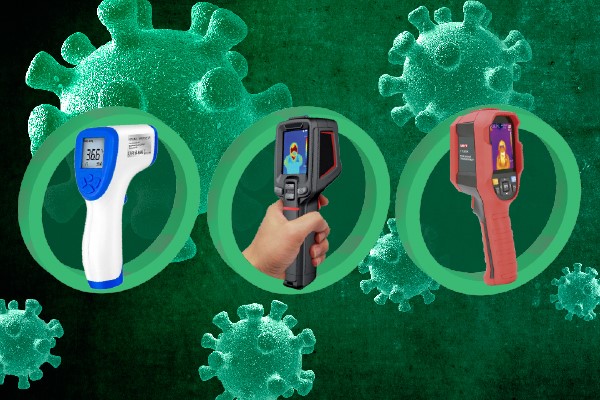Thermal cameras use and COVID-19
There are different thermal cameras in the market that due to the circumstances we are living with the pandemic are being used for the characteristics they have with respect to quickly and easily temperature measurement .
Although it is true that due to the COVID-19, this style of cameras has become known, it is also true that they have been on the market for a long time, both the portable thermal camera and the thermal camera with installation have been and are widely used, both in the strictest security environment, as an element within a TV internal system, or diverse other ones such as: security perimeter, rescue of people, detection of possible fire sources, as in construction to determine heat leaks, deficient insulation, etc. In short, its uses within multiple fields.
In this article we will give some brushstrokes on the different models that exist and the confrontation with the legality in the matter of Protection of Data that can cause for its use in control of accesses.
The first thing we need to know is that any hot object, which has a temperature above absolute zero (-273'15 degrees Celsius) emits an electromagnetic thermal energy, better known as infrared radiation, which although invisible to the human eye is perceptible to the thermographic camera.
Types of thermal cameras
We can find several types of thermographic cameras which we will call portable and those that require installation.
Within the portable thermographic cameras we find:
Infrared thermal camera to measure body temperature:
These are called precision infrared thermometers, among their most positive aspects, besides the fact that they are cheap, they do not provide acess to the health data, an important review that we will develop later.
Thermographic camera with image.
We obtain the image thanks to a dual lens that allows us to visualize it on the screen itself. The image it offers us is that of recognizing the person in the temperature spectrum, therefore, as such it is not an identifiable and recognizable image of the person, it is not like a photo from the graphic point of view (I do not see the image on the screen and I know is me) but from the point of view of the thermographic map.
Within this generality that is not small, we can find ourselves from devices that store up to a hundred thousand images or that can be connected to a computer or a smartphone.
Having finished the subject of the portable cameras we embark on the thermal camera that requires installation. We refer to thermal cameras with a temperature range of -20 ºC to +150 ºC, with a temperature accuracy of plus or minus eight degrees Celsius.
Within the range of thermal cameras there are those capable of capturing images in total darkness (0 lux) or with minimum illumination (0.002 lux), which is almost absolute darkness. Obviously, the functions available to them make them have a better definition, so we achieve a precision in the images, resulting in a sharpness of them.
What makes it different from its portable sister? Obviously it is not only that it requires an installation but that this camera has a software that can be previously configured by the user so that for example when it detects a person with a specific temperature, which we have designated, it can trigger an alarm.
For logical reasons this installation must be protected from wind and sun since these are weather conditions that can alter the temperature taking creating false alarms.
Now, can these thermal cameras make a diagnosis and indicate who has a fever and who does not? The truth is that no, fever is a medical concept whose diagnosis can only be made by health personnel.
Thermal cameras indicate if a high temperature exists, however, they cannot sift through the circumstances that make that person have that temperature.
Thermal cameras and data protection regulations
With regard to the confrontation of the use of these thermal cameras with the Data Protection regulations on April 30, the AEPD (Spanish Protection Data Agency) expressed its opinion, although it is true that it is rather confusing in its statements, it does make certain guidelines clear. The first is that temperature recording is a sensitive data, because it is relative to the user's health, which at first sight may seem so minimal, but which has special protection in the regulations. Mainly because there is an intrusion in the personal sphere of the person whose temperature we take and we make a presumption, and not precisely of innocence, that if that subject has a high temperature he or she suffers from a disease (COVID-19 infection) and by extension we restrict access to an environment such as a store. Therefore, the exclusive purpose of this is to prevent access in order to avoid massive contagion.
This is why the Ministry of Health has been asked to issue a mandatory regulation that sets out the guidelines for carrying out this measure safely.
The second guideline is that the principles of legality, proportionality and data limitation remain in force.
With regard to the legality, the legal basis that must support this collection and processing of data, in most cases, can not be the mere consent of users, and that is because it is not free, another issue is the taking of temperature to access the workplace.
In relation to proportionality is to discern whether the means we use is the most appropriate, if there are other less invasive means that can give the same results we should use those.
And last but not least, the users to whom these data are collected can make use of the rights guaranteed by the RGPD (EU) 679/2016
Since all virtue is in the balance
Signature Paula Diaz Caballero, expert in law and data protection at Prevent Security Systems
